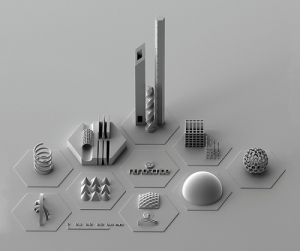The development of digital platforms and online solutions, especially to replace or transform in-person, hands-on business interactions, has accelerated due to the impact of COVID-19. Major public events and international travel are cancelled or uncertain for an extended period, leaving buyers and vendors unable to physically meet, or to gain first-hand information about hardware or software solutions, parts, and materials to evaluate and select the best fit for their business needs. We have already seen how major events such as TCT and IMTS, have introduced digital platform initiatives and content, such as IMTS Spark or TCT Asia Expo Reach, to try fill the gap or re-imagine what is most essential and effective in industry trade-shows.
Last year in July, 3DPrint.com had interviewed Gil Lavi, CEO of Israel-based 3D Alliances and bellwether for the industry, where he had shared his focus on being there for customers “to assist them with choosing the best solutions for their portfolio” and of providing “end-to-end solutions from design to end-use parts”. His efforts in connecting dozens of leading 3D printing start-ups with 3D resellers (to grow revenues, deploy and expand through global channels, obtain funding or talent) is what resulted in the world’s largest network of 1500 3D Value-Added Resellers (VAR) in 73 countries. Now, in response to COVID-19 impacts, 3DAlliances has launched 3DEvaluate, a platform to help buyers find, evaluate and select industrial 3D printing solutions, and for corresponding vendors to find and evaluate mature, capable buyers. The platform also serves as a third-party to streamline and optimize the purchasing process for both, buyer and vendor.
On the buyer side, the user can compare and evaluate different vendors and technologies within specific categories (FDM, SLA, SLS, Metals), receive sample parts or benchmark their own parts, and on selecting a supplier, can connect directly with them to complete the purchasing process. On the vendor side, the platform provides lead generation and qualification support, helps vendors make more efficient use of their marketing budgets, and enables them to interact with informed buyers who are mature and have already completed a thorough evaluation process, saving time and duplication of effort.
3DEvaluate also helps with verification. The two-sided platform does not indiscriminately list all 3D printing manufacturers seeking to sell. OEM manufacturers and vendors are not added to the platform on request, but are screened against certain criteria and profiled by 3DEvaluate to ensure vendors are reliable and professional before being added to the platform.
The platform serves to fundamentally speed up and simplify the buyer’s evaluation process prior to selecting an AM system. With buyers and vendors unable to travel and interact face to face, such online, remote third-party solutions accelerate the digitization in the buyer’s evaluation and selection process, bringing much needed efficiency as well as new capabilities to both buyers and sellers of AM systems worldwide. In addition, the platform also provides current information and educational content around 3D printing technologies and applications. It is clear that introducing such a platform (although it currently lists only FDM category, with SLA, SLS, and metal soon to come) in this macroeconomic environment, accelerates much-needed digitization in key areas of buyer-vendor interaction such as objective information, sampling, benchmarking, evaluation, purchasing and more.
It will be interesting to see how quickly 3DEvaluate is able to expand its reach and grow the number and types of vendors available across the technology categories. What would also be interesting to see is how such digital platforms compare with other product or solution comparison platforms, or complement third-party decision-making software platforms such as CASTOR (also from Israel) which evaluates both, the technical and financial feasibility of complex or low-volume parts for 3D printing. Both platforms sit in a critical point in the 3D printing value chain – helping customers, regardless of physical location, to objectively and efficiently, understand, evaluate and select the most suitable 3D technologies or vendors, to meet their specific business needs.
The post 3DEvaluate Launched to Digitize 3D Printing Buying and Vending Process appeared first on 3DPrint.com | The Voice of 3D Printing / Additive Manufacturing.







